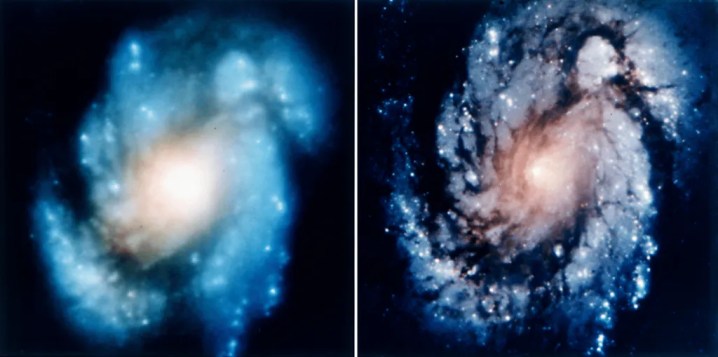The Hubble Space Telescope has experienced a problem with its hardware and is currently in safe mode, with science operations paused until the fault can be corrected. The problem is with one of the telescope’s three operational gyros, which are used to control the direction in which the telescope points. When a fault like this is detected, the telescope automatically goes into a safe mode in which it performs only essential operations to prevent any damage to its hardware.
“The telescope automatically entered safe mode when one of its three gyroscopes gave faulty readings,” NASA wrote in a statement. “The gyros measure the telescope’s turn rates and are part of the system that determines which direction the telescope is pointed. While in safe mode, science operations are suspended, and the telescope waits for new directions from the ground.”
The telescope went briefly into safe mode on November 19, when the fault was detected, but engineers were able to get it operational again the next day. However, the fault with the gyro persisted, and the same thing happened on November 21 and November 23. Since then, the telescope has stayed in safe mode while the engineers work out how to fix the issue.
Although any problem with the telescope hardware isn’t great, this problem isn’t a threat to the life of the telescope. NASA says that Hubble could operate with just one of its gyros if necessary, though this would require reconfiguration and would be less efficient than using all three of the gyros, so fixing the faulty gyro would be preferable. The gyros were installed in 2009 during a servicing mission, and originally there were six of them. Now, three of them remain operational.

The servicing missions were necessary because when Hubble was launched in 1990, the images that it sent to Earth were blurry due to a tiny flaw in its primary mirror. A series of Space Shuttle missions took astronauts to the telescope between 1993 and 2009, at which times they made adjustments and repairs to keep the telescope operating. Hubble has now been active for over three decades.
Today, December 2, is the 30th anniversary of the first of these servicing mission, when a crew of seven worked to install a new camera and other components that turned Hubble’s images from blurry smears to the beautiful images we still see today.



